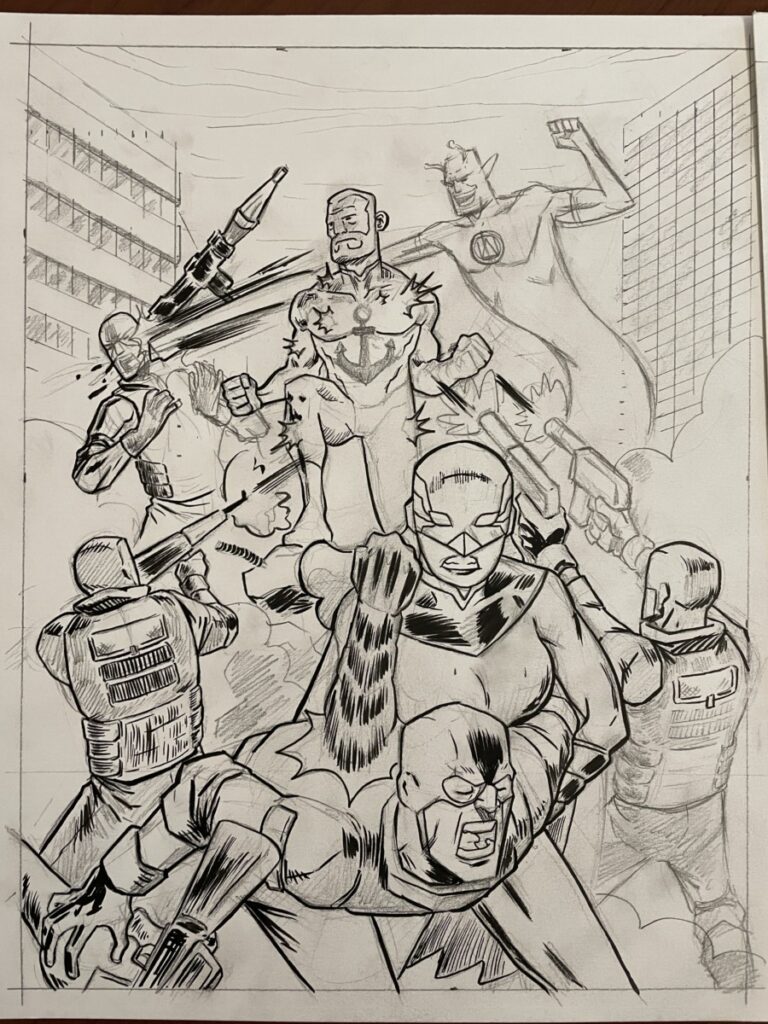The manifesto is a beautiful thing of the past, what was once a declaration of the deepest, and rawest ideals and emotions of a person or body of people has now been replaced by the mission statement on the about us page. Equal parts biography and threat, the manifesto was a powerful tool for people to get their point across. While The Constructivist Manifesto, and Our Book are a far cry from the bombast of the Futurist Manifesto they both share common themes.
While going through these readings some common themes stuck out to me. First, and probably most important among them was the desire by all authors to look to the possibilities of the future. All three authors having seen the romanticization of things as they are, have grown tired with doing things as they are expected to be done. Instead all authors are looking to rewrite the rules and rise to new challenges of their times, refusing to be stuck in the glory of previous creators. Secondly they all look to use new technology not to duplicate past victories of their forefathers at an accelerated pace, but to create totally new work that would leave their mark on humanity.
The Futurists while not directly referential to specific technologies were more about a forward thinking ideology. It seems to me that their passion was less about how they were going to express a new vision, and simply that they were, regardless of what tools were available to them. The Constructivists on the other hand were excited about all the possibilities new technology brought them. For the Constructivists their passion lied in meeting the demands of the day the best way they could. They believed that the machine was the key to creating useful works by stripping away the romance of the artist and giving unique form and function to new ideas of the day. The Constructivists, acknowledging that it is not the needs of the artists or creators but the needs of the public that dictate the direction of their work. Within this ideology is the concept of dematerialization.
Dematerialization, is the opposite of materialism. It is a reaction of the public’s desires and the needs of the market to deliver goods in a more efficient manner that leads to the evolution of mediums. This paired with innovations in technology bring us the metamorphosis. I find the concept of dematerialization being conceived in the early 1900s to be extremely interesting. Dematierialization is arguably at its apex right now. We stream movies and music, we have kindles and even video game makers are selling their consoles ( the box which you play the games on) without disc drives. This weekend I saw a Reddit post about a guy who purchased a $200 special edition boxset of a video game. The boxset contained a figure and a steel-book case for the game, but the case for the game didn’t actually have the game within it. Instead there was just a code which could be redeemed on the Playstation network to download the game. I imagine the Constructivists would be thrilled with this progress, but I am curious as to how they would perceive our current machine lead lives. Would they be intrigued and overjoyed about how algorithms rule our lives? Furthermore, I imagine the Futurists for all their gusto and fervor for tearing down institutions would be furious at the idea that anyone let alone an algorithm would dictate to them what they would need to do to spread their message.
While the Futurists and Constructivists have a lot in common where I believe they part ways is the aims of their messaging. The Futurists are egotistical, their aim is not to contribute to society but rather to tear it down and remake it in their image. For The Constructivists it’s all in the name. Their desire to is be useful, removing their egos and desires from the work and instead wanting to push the boundaries for the benefit of the public. It’s not about what the constructivists need, it’s about what society needs.
While I disagree with the anarchist, and anti-female sentiments of The Futurists I can’t help but feel like there’s something to what they’re saying. In our current society I feel like there’s an over-reliance on nostalgia. 20 years from now what “vibe” will generation alpha be trying to evoke? A 2022 vibe is nothing more than remixed 2002 vibe. so will 2042 vibe be a remix of the remix? How long can we go sampling the works of others before we have to create something of our own that exists for the present? Is that even possible now?
I feel a bit of unease with the worshiping of the machine that The Constructivists do. It echos that uncomfortable corporate speak so many modern corporations love. Getting us to separate our emotions from our work in the name of progress is fine when the machine is incapable of controlling us without us realizing it.Couple algorithmic manipulation with corporate jargon and how long before something like Metamates doesn’t sound ridiculous to the average person. Life is for more than being useful.





Recent Comments